Editor in Chief Nancy Shute talks about life’s complexities, from its evolution on Earth as a single cell to complex human behavior.
Your account has been suspended. Please update your subscription plan at rss.app. - (KD843mj8YEDbLDRX)
Your account has been suspended. Please update your subscription plan at rss.app. - (ntzUwlR6zaTflwXQ)
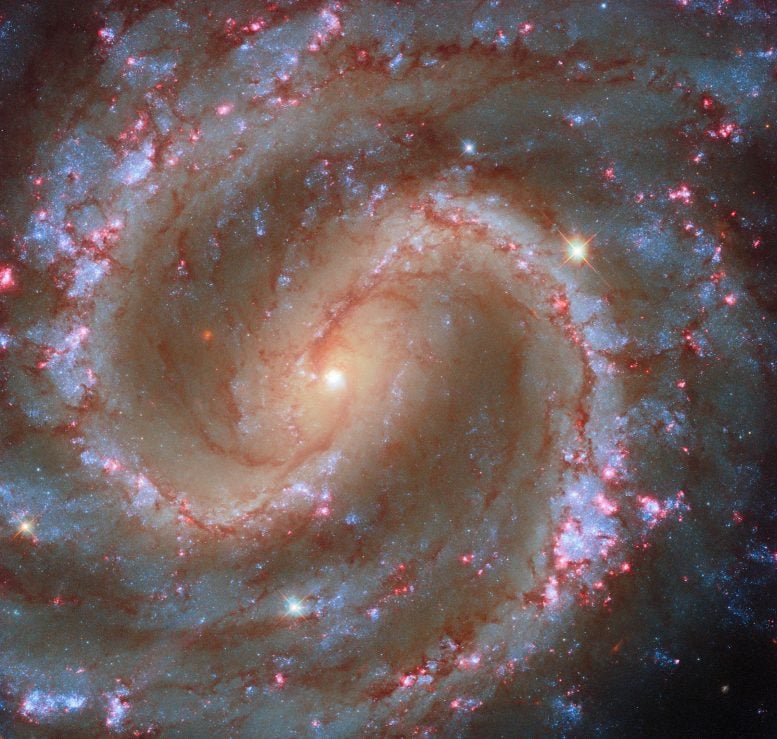
Hubble unveils the “Lost Galaxy” as a vibrant spiral alive with newborn stars and glowing clouds of cosmic energy. This Hubble Space Telescope image highlights the spiral galaxy NGC 4535, a vast system of stars located about 50 million light-years from Earth in the constellation Virgo (The Maiden). While that distance is far beyond anything

A bubbly-looking galaxy smashup called the Champagne Cluster offers a rare glimpse into cosmic collisions—and the hidden behavior of dark matter. The Champagne Cluster is a dramatic cosmic system where two massive galaxy clusters are colliding and slowly merging into a single, even larger structure. Astronomers gave it its festive nickname because it was discovered
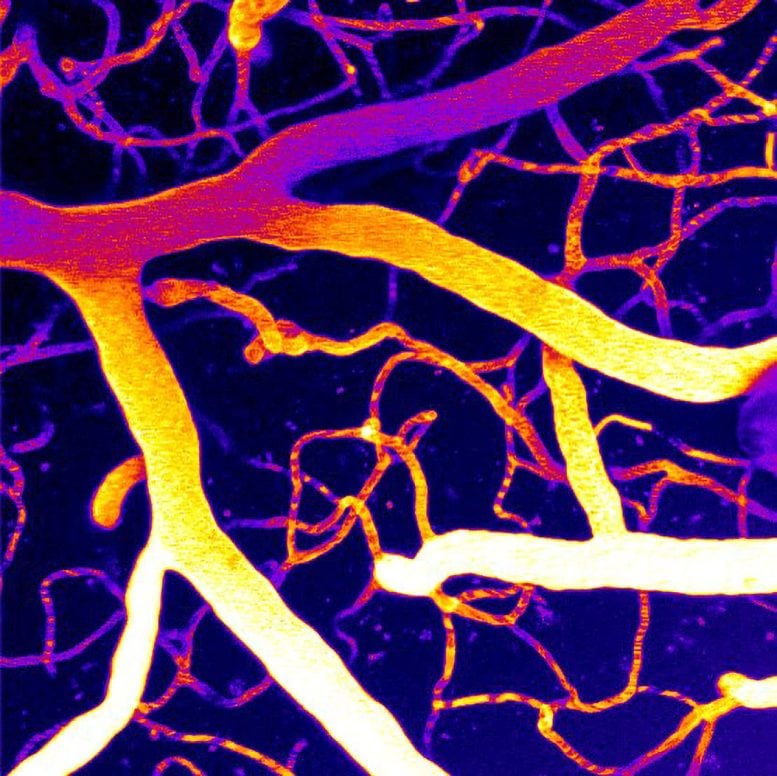
Increasing the levels of a particular phospholipid in the membranes of brain cells may offer a promising new way to improve blood circulation in the brain and support healthier brain activity. A potential new approach to treating reduced blood flow in the brain and related forms of dementia is beginning to emerge. Scientists at the
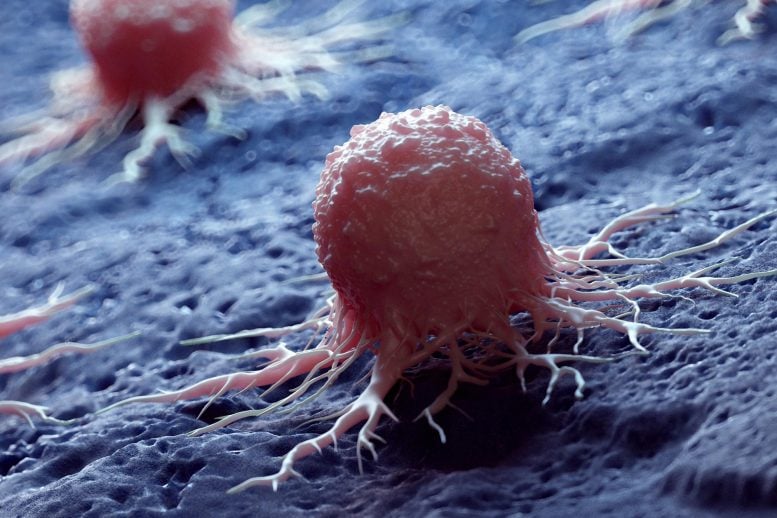
Cancer is becoming a global crisis shaped less by biology than by inequality, risk exposure, and access to care. Global cancer diagnoses and deaths rose sharply between 1990 and 2023, even as treatments improved and prevention efforts expanded. Without swift action and focused investment, projections indicate that 30.5 million people will be newly diagnosed with
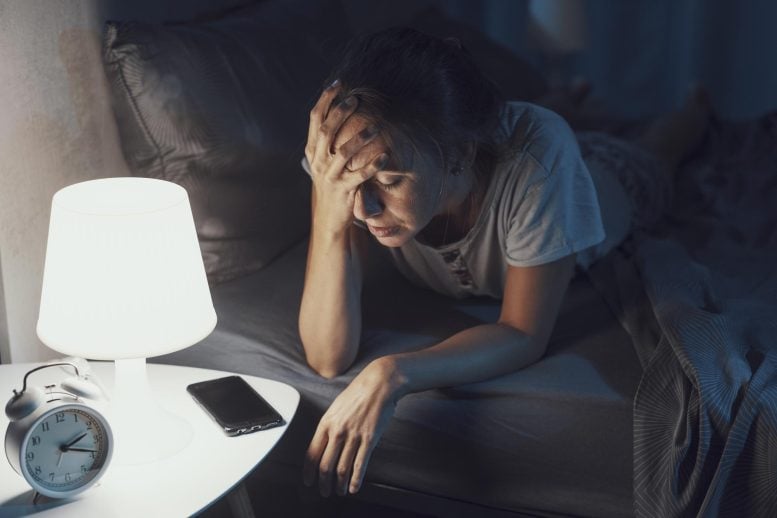
OHSU researchers found that getting at least seven hours of sleep each night can improve how you feel and help you live longer. A full night of sleep may be far more important than many people realize. New research from Oregon Health & Science University indicates that regularly falling short on sleep may be linked
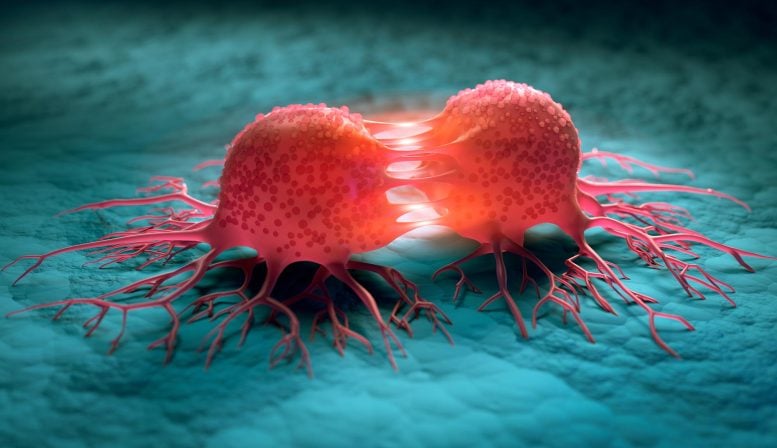
A new study reveals how a single cancer protein may simultaneously drive tumor survival and metabolic control, uncovering a hidden link between two core features of cancer. Scientists have uncovered a shared molecular process that connects two defining features of cancer. These include the ability of cancer cells to avoid apoptosis (a form of programmed
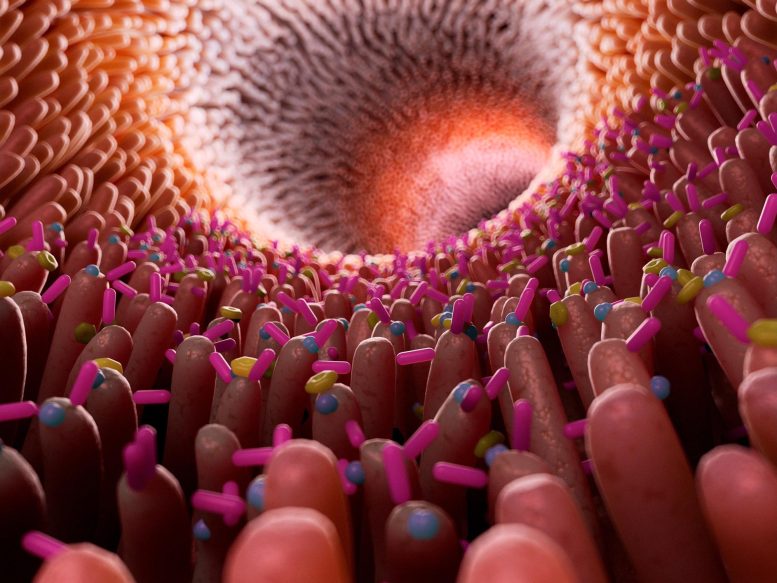
Many everyday chemicals can damage beneficial gut bacteria and potentially fuel antibiotic resistance, prompting calls to rethink chemical safety testing. A sweeping laboratory analysis of synthetic chemicals has uncovered 168 substances that can harm beneficial bacteria living in the human gut. These compounds interfere with the growth of microbes that play an essential role in
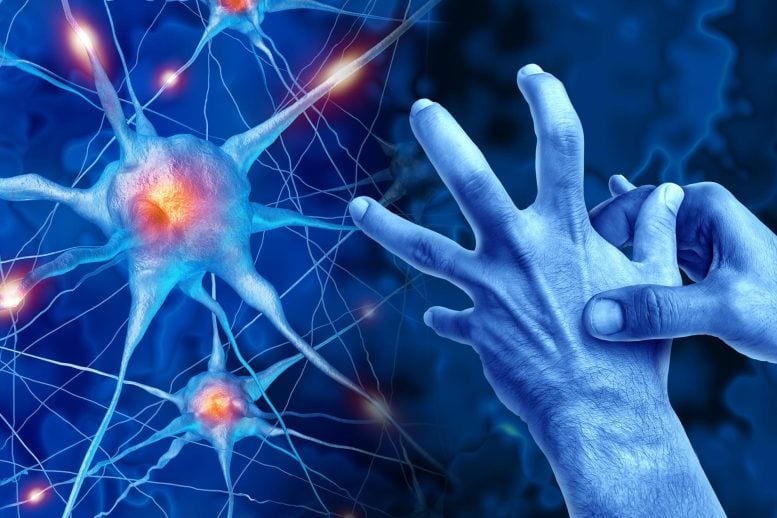
A new study suggests dopamine may not directly control how fast or forcefully movements are made, challenging a long-standing view in neuroscience. New research led by McGill University is questioning a widely held idea about how dopamine influences movement, a finding that may change how scientists approach treatments for Parkinson’s disease. The study, published in
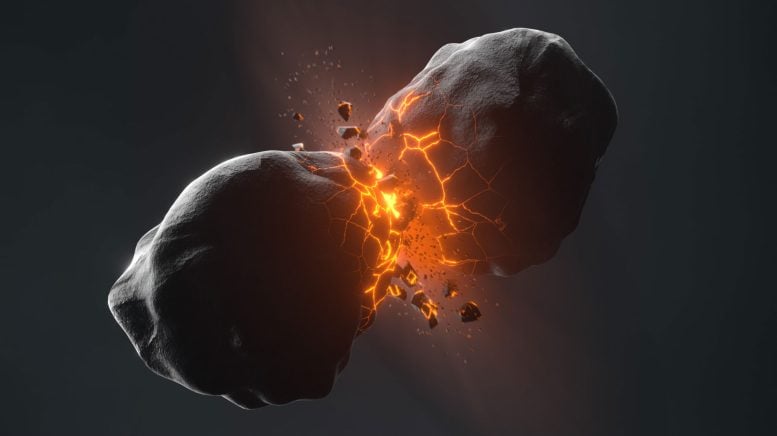
While surveying distant worlds beyond our solar system, researchers unexpectedly obtained the first direct images showing objects colliding within a nearby star system. In the early life of a star system, space can be a chaotic crash zone. Pieces of rock and ice such as comets and asteroids frequently collide, sometimes breaking apart and sometimes
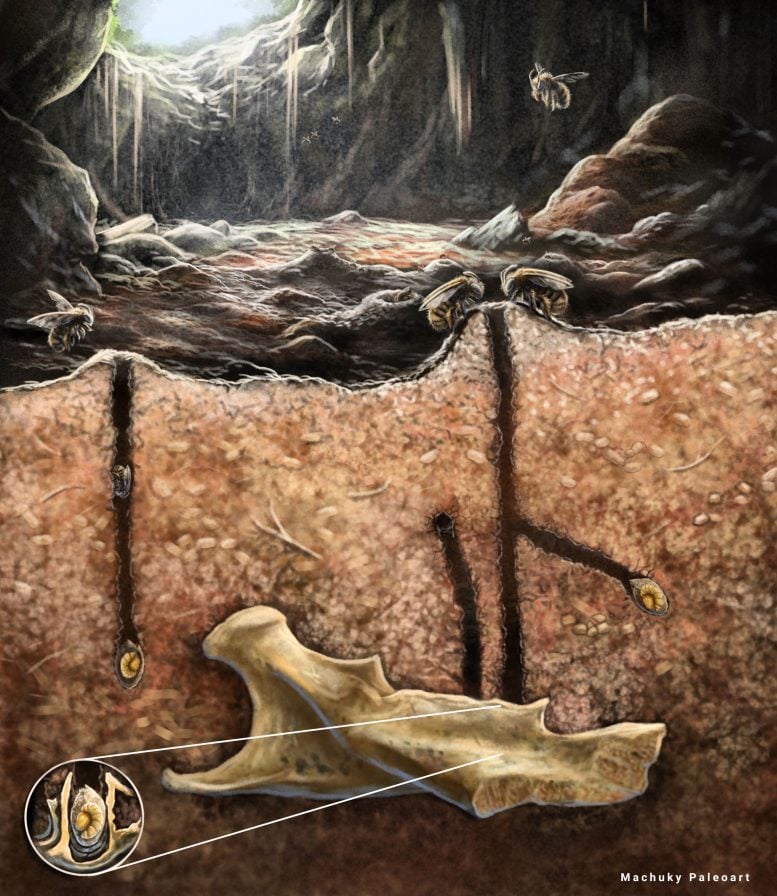
Paleontologists have discovered the first known fossilized bee nests built inside ancient bones, uncovered in a cave that came close to being used as a latrine. A cave on Hispaniola preserves rare evidence that ancient bees nested inside fossil cavities. The find suggests an unusual local environment and a much deeper story about what brought
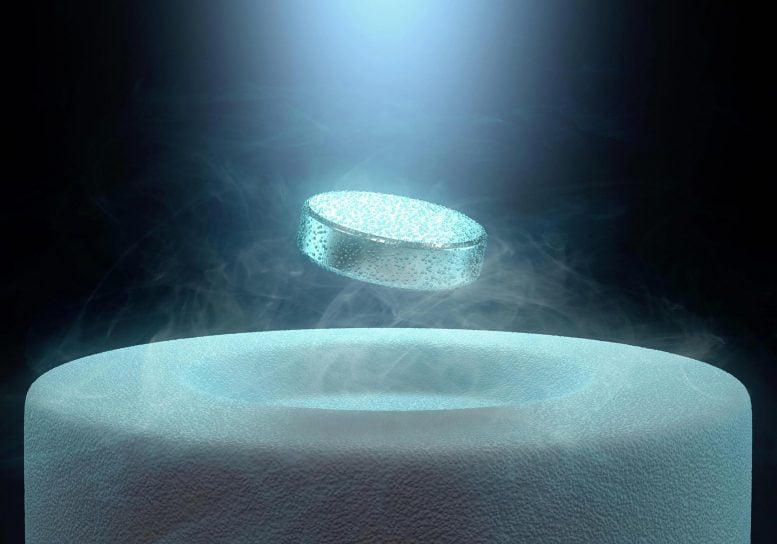
New research sharpens understanding of the hidden symmetry in a mysterious superconductor. Superconductors are materials that allow electrical current to flow without any resistance, a property that typically appears only at extremely low temperatures. While most known superconductors follow established theoretical frameworks, strontium ruthenate, Sr₂RuO₄, has remained difficult to explain since researchers first identified its

After two years, people who undergo metabolic and bariatric surgery achieve weight loss that is about five times greater than with non-surgical approaches. Semaglutide and tirzepatide have become some of the most talked-about medications in modern weight loss care. Semaglutide is the active ingredient in Ozempic, a drug originally used for type 2 diabetes that
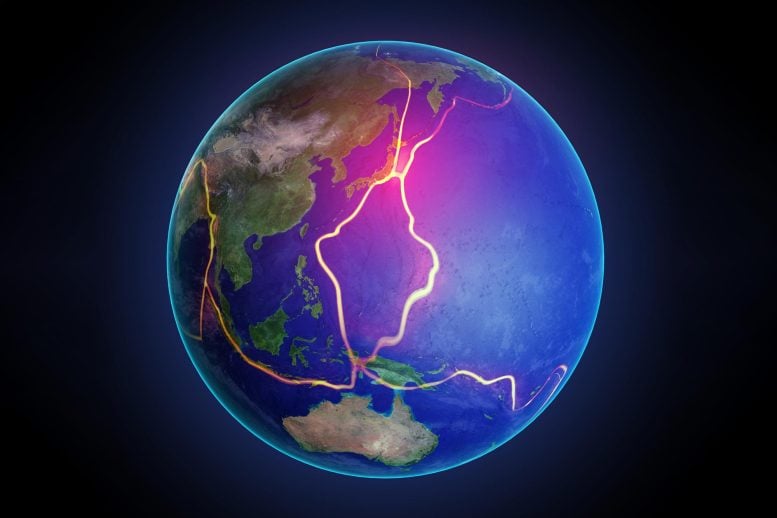
Ancient Australian rocks suggest Earth’s continents formed later than expected and share a common origin with the Moon. A study of feldspar crystals preserved in Australia’s oldest magmatic rocks is shedding new light on the early evolution of Earth’s mantle and continents, as well as the origins of the Moon. The research was led by
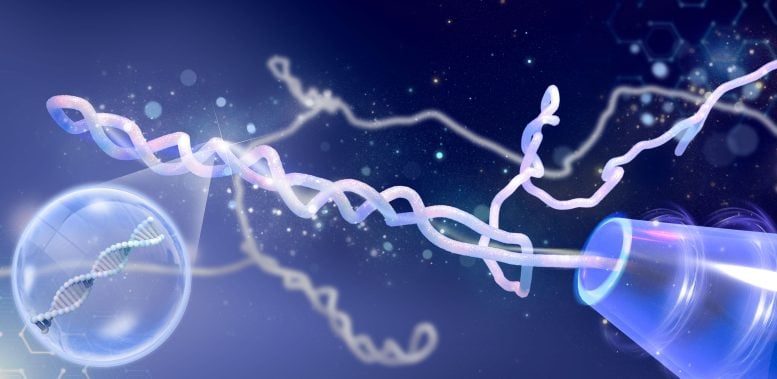
What scientists long believed were knots in DNA may actually be persistent twists formed during nanopore analysis, revealing an overlooked mechanism with major implications. For decades, researchers interpreted complex electrical patterns seen when DNA moved through nanopores as signs that the molecule was forming knots. Nanopore experiments, which are widely used to study genetic material,
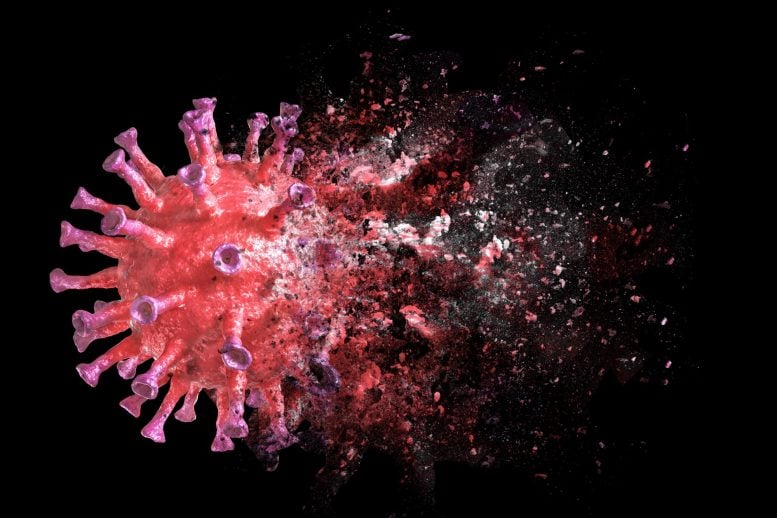
Researchers identify a shared RNA-protein interaction that could lead to broad-spectrum antiviral treatments for enteroviruses A new study from the University of Maryland, Baltimore County (UMBC), published in Nature Communications, explains how enteroviruses begin reproducing inside human cells. These viruses include those responsible for polio, encephalitis, myocarditis, and the common cold, and they start infection

Scientists have discovered that breast cancer can disturb the brain’s daily stress hormone rhythms early in disease development. “The brain is an exquisite sensor of what’s going on in your body,” says Cold Spring Harbor Laboratory Assistant Professor Jeremy Borniger. “But it requires balance. Neurons need to be active or inactive at the right times.
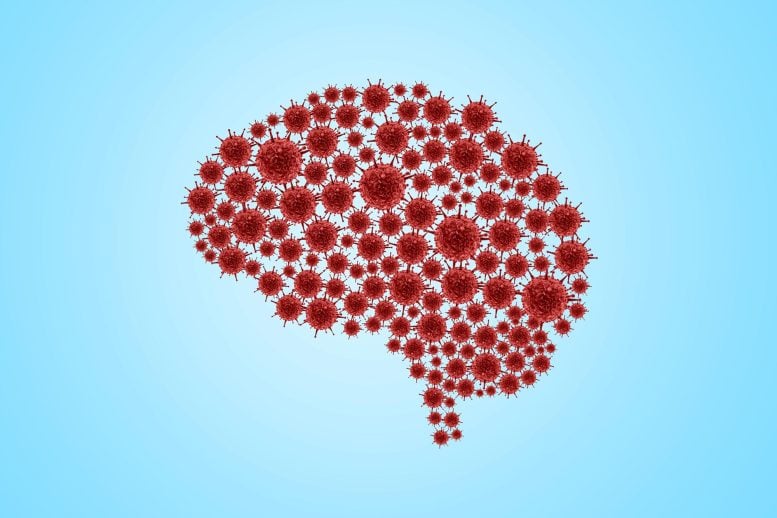
Summary: Advanced imaging reveals that COVID-19 may cause lasting brain changes, even in people without ongoing symptoms, pointing to hidden neurological effects that could persist long after recovery. COVID-19 affects more than the lungs. Research shows that even after people have fully recovered from the infection, the virus can cause significant changes in the brain,

The scientists show that a specially engineered antibody can significantly enhance a group of medications that, despite early excitement, has had difficulty delivering on its initial potential. For two decades, cancer therapies known as CD40 agonist antibodies have raised hopes while repeatedly falling short. In laboratory animals, these drugs strongly stimulated immune attacks on tumors,
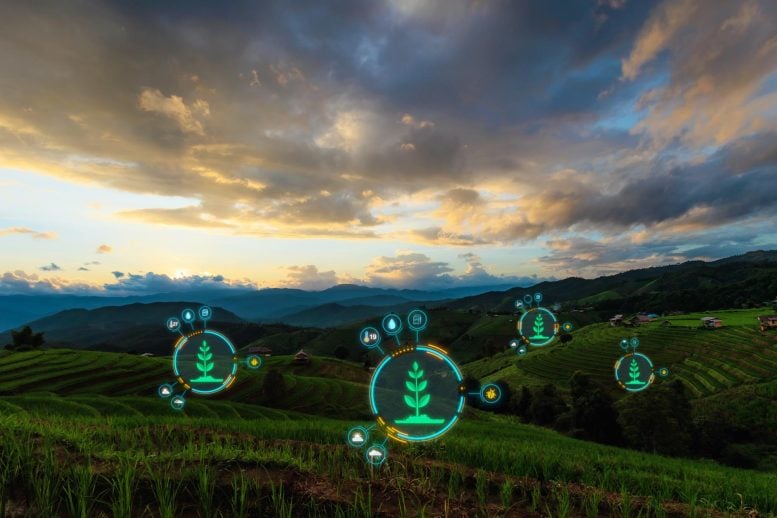
What we throw away as food waste may hold the key to healthier crops, stronger ecosystems, and new medical compounds. Food waste is often seen as little more than compost material, but new research shows it can offer much more. Scientists are discovering valuable uses for discarded food, ranging from dried beet pulp to coconut
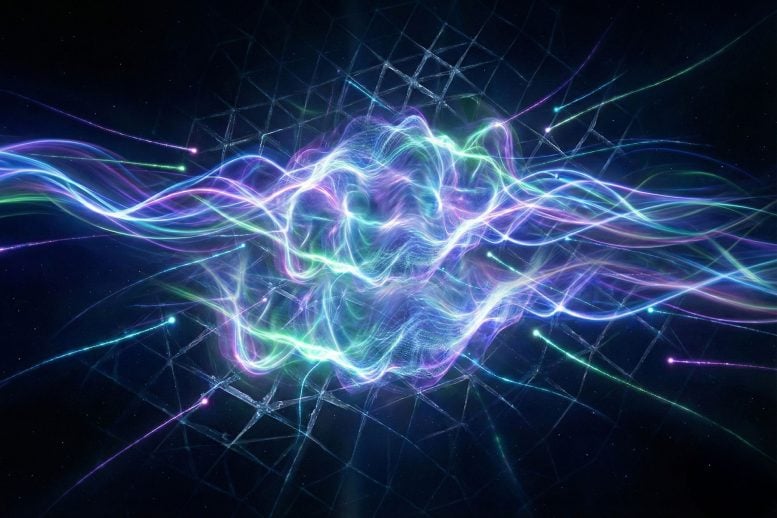
Researchers at TU Wien have developed a one-dimensional “quantum wire” using a gas of ultracold atoms. In this system, both mass and energy can move freely without friction or energy loss. In everyday physics, transport refers to the movement of something from one place to another. This can include electricity traveling through a wire, heat

A new study links climate stress to the disappearance of the early human species Homo floresiensis, known as the “hobbits” of Flores. An international group of researchers, including scientists from the University of Wollongong (UOW), has uncovered strong evidence linking climate change to the disappearance of the early human species Homo floresiensis, commonly called the

Researchers have uncovered a previously unrecognized role for immune cell surface sugars in driving inflammation in psoriasis. Scientists have refined how they understand the role of sugars called glycans in guiding immune cells into the skin during psoriasis, a chronic inflammatory disease. The findings are reported in a study recently published in the journal Science

Exposure to artificial light at night appears to trigger stress in the brain and inflammation in the arteries, raising heart disease risk. Researchers say even modest light increases could have long-term cardiovascular consequences. Higher exposure to artificial light at night was associated with increased stress activity in the brain, inflammation in the arteries, and a

Activating two somatostatin receptors enhances amyloid beta breakdown and improves memory in models of Alzheimer’s disease. Scientists at Karolinska Institutet in Sweden and the RIKEN Center for Brain Science in Japan have uncovered two brain receptors that help regulate how amyloid beta is broken down, a process that is disrupted in Alzheimer’s disease. The researchers
The Champagne Cluster is a rare and beautiful example of two galaxy clusters smashing together. Its festive name comes from both its New Year’s Eve discovery and its bubbly appearance in space. Images reveal superheated gas and galaxies spread across a massive collision zone. Astronomers believe this system could help explain how dark matter responds when giant structures collide.
Scientists have uncovered why big predators like sharks spend so much time in the ocean’s twilight zone. The answer lies with mid-sized fish such as the bigscale pomfret, which live deep during the day and rise at night to feed, linking deep and surface food webs. Using satellite tags, researchers tracked these hard-to-study fish for the first time. Their movements shift with water clarity, potentially altering entire ocean food chains.
Thanks to Einstein’s relativity, time flows differently on Mars than on Earth. NIST scientists have now nailed down the difference, showing that Mars clocks tick slightly faster—and fluctuate over the Martian year. These microsecond shifts could play a big role in future Mars navigation, communications, and even a solar-system-wide internet. It’s a small time gap with big consequences for space exploration.
Scientists have detected the most distant supernova ever seen, exploding when the universe was less than a billion years old. The event was first signaled by a gamma-ray burst and later confirmed using the James Webb Space Telescope, which was able to isolate the blast from its faint host galaxy. Surprisingly, the explosion closely resembles supernovae linked to gamma-ray bursts in the modern universe.
Tiny lab-grown brains are offering an unprecedented look at how schizophrenia and bipolar disorder disrupt neural activity. Researchers found distinct electrical firing patterns that could identify these conditions with high accuracy. The discovery opens the door to more precise diagnoses and personalized drug testing. Instead of guessing medications, doctors may one day see what works before treating the patient.
Researchers say fusion reactors might do more than generate clean energy—they could also create particles linked to dark matter. A new theoretical study shows how neutrons inside future fusion reactors could spark rare reactions that produce axions, particles long suspected to exist but never observed. The work revisits an idea teased years ago on The Big Bang Theory, where fictional physicists couldn’t solve the puzzle. This time, real scientists think…
A randomized trial from Vanderbilt-Ingram Cancer Center reveals that magnesium may be the missing key to keeping vitamin D levels in balance. The study found that magnesium raised vitamin D in people who were deficient while dialing it down in those with overly high levels—suggesting a powerful regulating effect. This could help explain why vitamin D supplements don’t work the same way for everyone and why past studies linking vitamin…
As we age, our immune system quietly loses its edge, and scientists have uncovered a surprising reason why. A protein called platelet factor 4 naturally declines over time, allowing blood stem cells to multiply too freely and drift toward unhealthy, mutation-prone behavior linked to cancer, inflammation, and heart disease. Researchers found that restoring this protein in older mice — and even in human stem cells in the lab — made…
Weight loss restored healthy metabolism in both young and mid-aged mice, but the brain told a different story. In mid-aged animals, slimming down actually worsened inflammation in a brain region tied to appetite and energy balance. While this inflammation eventually subsided, brain inflammation has been linked to cognitive decline and neurodegenerative disease. The results suggest that weight loss in midlife may not be as straightforward as once thought.
When researchers lowered whale bones into the deep ocean, they expected zombie worms to quickly move in. Instead, after 10 years, none appeared — an unsettling result tied to low-oxygen waters in the region. These worms play a key role in breaking down whale remains and supporting deep-sea life. Their absence hints that climate-driven oxygen loss could unravel entire whale-fall ecosystems.
UBC Okanagan researchers have uncovered how plants create mitraphylline, a rare natural compound linked to anti-cancer effects. By identifying two key enzymes that shape and twist molecules into their final form, the team solved a puzzle that had stumped scientists for years. The discovery could make it far easier to produce mitraphylline and related compounds sustainably. It also highlights plants as master chemists with untapped medical potential.
In collisions at CERN’s Large Hadron Collider, hotter than the Sun’s core by a staggering margin, scientists have finally solved a long-standing mystery: how delicate particles like deuterons and their antimatter twins can exist at all. Instead of forming in the initial chaos, these fragile nuclei are born later, when the fireball cools, from the decay of ultra-short-lived, high-energy particles.
A major new review has put hundreds of alternative autism treatments under the microscope—and most didn’t hold up. Scientists analyzed decades of research and found little reliable evidence that popular approaches like probiotics, acupuncture, or music therapy truly work. Alarmingly, safety was often ignored, with many treatments never properly evaluated for side effects. The researchers stress that looking at the full body of evidence matters far more than trusting a…
As the immune system weakens with age, scientists have found a way to restore some of its lost strength. By delivering mRNA to the liver, they created a temporary source of immune-boosting signals that normally come from the thymus. Older mice treated this way produced more effective T cells and responded far better to vaccines and cancer treatments. The strategy could one day help extend healthy years of life.
Stanford scientists have uncovered how mRNA COVID-19 vaccines can very rarely trigger heart inflammation in young men — and how that risk might be reduced. They found that the vaccines can spark a two-step immune reaction that floods the body with inflammatory signals, drawing aggressive immune cells into the heart and causing temporary injury.
Neutrinos may be nearly invisible, but they play a starring role in the Universe. Long-standing anomalies had hinted at a mysterious fourth “sterile” neutrino, potentially rewriting the laws of physics. Using exquisitely precise measurements of tritium decay, the KATRIN experiment found no evidence for such a particle, sharply contradicting earlier claims. With more data and upgrades ahead, the hunt is far from over.
New high-resolution images show that novae are anything but simple stellar fireworks. One exploded with multiple gas streams colliding almost immediately, while another shockingly delayed its eruption for more than 50 days before unleashing a powerful blast. These complex outflows create shock waves that produce intense gamma rays, confirming long-standing theories with direct visual evidence. The findings reveal novae as evolving, multi-stage events rather than single, instant explosions.
A spectacular fossil trove on the Arctic island of Spitsbergen shows that marine life made a stunning comeback after Earth’s greatest extinction. Tens of thousands of fossils reveal fully aquatic reptiles and complex food chains thriving just three million years later. Some predators grew over five meters long, challenging the idea of a slow, step-by-step recovery. The find rewrites the early history of ocean ecosystems.
Researchers have discovered how cells activate a last-resort DNA repair system when severe damage strikes. When genetic tangles overwhelm normal repair pathways, cells flip on a fast but error-prone emergency fix that helps them survive. Some cancer cells rely heavily on this backup system, even though it makes their DNA more unstable. Blocking this process could expose a powerful new way to target tumors.
Scientists have uncovered ancient wolf remains on a small Baltic island where wolves could only have been brought by humans. These animals weren’t dogs, but true wolves that ate the same marine food as the people living there and showed signs of isolation and possible care. One even survived with an injured limb that would have made hunting difficult. The findings suggest humans once kept and managed wolves in ways…
Mars once had sprawling river systems that rivaled major watersheds on Earth, and scientists have now identified the biggest ones for the first time. Researchers mapped 16 massive drainage basins where water likely flowed long enough to support life. Even though these areas cover just 5% of ancient Martian terrain, they account for a huge share of erosion and sediment movement. That makes them some of the most promising places…
A newly identified region on Mars may hold the key to future human landings. Researchers found evidence of water ice less than a meter beneath the surface, close enough to be harvested for water, oxygen, and fuel. The location strikes a rare balance between sunlight and cold, helping preserve the ice. It could also offer clues about whether Mars once supported life.
A major update to how obesity is defined could push U.S. obesity rates to nearly 70%, according to a large new study. The change comes from adding waist and body fat measurements to BMI, capturing people who were previously considered healthy. Many of these newly included individuals face higher risks of diabetes and heart disease. The findings suggest that where fat is stored may be just as important as overall…
New observations reveal that the relationship between ultraviolet and X-ray light in quasars has changed over billions of years. This unexpected shift suggests the structure around supermassive black holes may evolve with time, challenging a decades-old assumption.
Environmental change doesn’t affect evolution in a single, predictable way. In large-scale computer simulations, scientists discovered that some fluctuating conditions help populations evolve higher fitness, while others slow or even derail progress. Two populations facing different kinds of change can end up on completely different evolutionary paths. The findings challenge the idea that one population’s response can represent a whole species.
Mars isn’t just dusty—it crackles with electricity. Scientists discovered that dust devils can generate tiny electric sparks, captured for the first time by Perseverance’s microphone. These static discharges may rapidly destroy chemicals like methane and reshape how Mars’ atmosphere works. The sparks could even affect climate patterns and pose risks to future missions.
Researchers have created a protein that can detect the faint chemical signals neurons receive from other brain cells. By tracking glutamate in real time, scientists can finally see how neurons process incoming information before sending signals onward. This reveals a missing layer of brain communication that has been invisible until now. The discovery could reshape how scientists study learning, memory, and brain disease.
This Christmas, astronomers are highlighting a spectacular region of space that looks remarkably like a glowing holiday tree. Known as NGC 2264, this distant star-forming region sits about 2,700 light-years away and is filled with newborn stars lighting up clouds of gas and dust. The stars form a triangular shape called the Christmas Tree cluster, crowned by the dramatic Cone Nebula and wrapped in the swirling Fox Fur Nebula below.…
A new catalyst design could transform how acetaldehyde is made from renewable bioethanol. Researchers found that a carefully balanced mix of gold, manganese, and copper creates a powerful synergy that boosts efficiency while lowering operating temperatures. Their best catalyst achieved a 95% yield at just 225°C and stayed stable for hours. The discovery points to a cleaner, more sustainable path for producing key industrial chemicals.
Scientists discovered that common food emulsifiers consumed by mother mice altered their offspring’s gut microbiome from the very first weeks of life. These changes interfered with normal immune system training, leading to long-term inflammation. As adults, the offspring were more vulnerable to gut disorders and obesity. The findings suggest that food additives may have hidden, lasting effects beyond those who consume them directly.
Astronomers have decoded the hidden past of a distant red giant star by listening to tiny vibrations in its light, revealing clues of a dramatic cosmic history. The star, which quietly orbits a dormant black hole, appears to be spinning far faster than it should—and its internal “starquakes” suggest it may have once collided and merged with another star. Even more puzzling, its chemical makeup makes it look ancient, while…
Scientists have discovered a giant cosmic filament where galaxies spin in sync with the structure that holds them together. The razor-thin chain of galaxies sits inside a much larger filament that appears to be slowly rotating as a whole. This coordinated motion is far stronger than expected by chance and hints that galaxy spin may be inherited from the cosmic web itself. The finding opens a new window into how…
When Earth was a molten inferno, water may have been locked safely underground rather than lost to space. Researchers discovered that bridgmanite deep in the mantle can store far more water at high temperatures than previously believed. During Earth’s cooling, this hidden reservoir could have held water volumes comparable to today’s oceans. Over time, that buried water helped drive geology and rebuild the planet’s surface environment.
Deep ocean hot spots packed with heat are making the strongest hurricanes and typhoons more likely—and more dangerous. These regions, especially near the Philippines and the Caribbean, are expanding as climate change warms ocean waters far below the surface. As a result, storms powerful enough to exceed Category 5 are appearing more often, with over half occurring in just the past decade. Researchers say recognizing a new “Category 6” could…
Tramadol, a popular opioid often seen as a “safer” painkiller, may not live up to its reputation. A large analysis of clinical trials found that while it does reduce chronic pain, the relief is modest—so small that many patients likely wouldn’t notice much real-world benefit. At the same time, tramadol was linked to a significantly higher risk of serious side effects, especially heart-related problems like chest pain and heart failure,…
A tiny fish long feared lost has resurfaced in Bolivia, offering a rare conservation success story amid widespread habitat destruction. Moema claudiae, a seasonal killifish unseen for more than 20 years, was rediscovered in a small temporary pond hidden within a fragment of forest surrounded by farmland. The find allowed scientists to photograph the species alive for the first time and uncover new details about its behavior and ecology.
A high-fat diet does more than overload the liver with fat. New research from MIT shows that prolonged exposure to fatty foods can push liver cells into a survival mode that quietly raises the risk of cancer. Faced with ongoing metabolic stress, these cells abandon their normal roles and revert to a more primitive state that helps them endure harsh conditions. Over time, that shift leaves the liver less functional…
A new study suggests that dementia may be driven in part by faulty blood flow in the brain. Researchers found that losing a key lipid causes blood vessels to become overactive, disrupting circulation and starving brain tissue. When the missing molecule was restored, normal blood flow returned. This discovery opens the door to new treatments aimed at fixing vascular problems in dementia.
Everyday sights and sounds quietly shape the choices people make, often without them realizing it. New research suggests that some individuals become especially influenced by these environmental cues, relying on them heavily when deciding what to do. The problem arises when those cues start leading to worse outcomes. For certain people, the brain struggles to update these learned signals, causing them to repeat risky or harmful decisions over time.
Scientists are digging into the hidden makeup of carbon-rich asteroids to see whether they could one day fuel space exploration—or even be mined for valuable resources. By analyzing rare meteorites that naturally fall to Earth, researchers have uncovered clues about the chemistry, history, and potential usefulness of these ancient space rocks. While large-scale asteroid mining is still far off, the study highlights specific asteroid types that may be promising targets,…
A new eco-friendly technology can capture and destroy PFAS, the dangerous “forever chemicals” found worldwide in water. The material works hundreds to thousands of times faster and more efficiently than current filters, even in river water, tap water, and wastewater. After trapping the chemicals, the system safely breaks them down and refreshes itself for reuse. It’s a rare one-two punch against pollution: fast cleanup and sustainable destruction.
A major evolutionary theory says most genetic changes don’t really matter, but new evidence suggests that’s not true. Researchers found that helpful mutations happen surprisingly often. The twist is that changing environments prevent these mutations from spreading widely before they become useless or harmful. Evolution, it turns out, is less about reaching perfection and more about endlessly chasing a moving target.
What we put on our plates may matter more for the climate than we realize. Researchers found that most people, especially in wealthy countries, are exceeding a “food emissions budget” needed to keep global warming below 2°C. Beef alone accounts for nearly half of food-related emissions in Canada. Small changes—less waste, smaller portions, and fewer steaks—could add up to a big climate win.
Alzheimer’s has long been considered irreversible, but new research challenges that assumption. Scientists discovered that severe drops in the brain’s energy supply help drive the disease—and restoring that balance can reverse damage, even in advanced cases. In mouse models, treatment repaired brain pathology, restored cognitive function, and normalized Alzheimer’s biomarkers. The results offer fresh hope that recovery may be possible.
The familiar fight between “mind as software” and “mind as biology” may be a false choice. This work proposes biological computationalism: the idea that brains compute, but not in the abstract, symbol-shuffling way we usually imagine. Instead, computation is inseparable from the brain’s physical structure, energy constraints, and continuous dynamics. That reframes consciousness as something that emerges from a special kind of computing matter, not from running the right program.
AI writing tools are supercharging scientific productivity, with researchers posting up to 50% more papers after adopting them. The biggest beneficiaries are scientists who don’t speak English as a first language, potentially shifting global centers of research power. But there’s a downside: many AI-polished papers fail to deliver real scientific value. This growing gap between slick writing and meaningful results is complicating peer review, funding decisions, and research oversight.
The search for life on Earth is speeding up, not slowing down. Scientists are now identifying more than 16,000 new species each year, revealing far more biodiversity than expected across animals, plants, fungi, and beyond. Many species remain undiscovered, especially insects and microbes, and future advances could unlock millions more. Each new find also opens doors to conservation and medical breakthroughs.
Cannabis products with higher THC levels may slightly reduce chronic pain, particularly nerve pain, according to a review of multiple clinical trials. The improvement was small and short-lived, while side effects were more common. Products with little or no THC, including CBD-only formulations, showed no clear benefit. Researchers say more long-term studies are needed.
A new study suggests temporal lobe epilepsy may be linked to early aging of certain brain cells. When researchers removed these aging cells in mice, seizures dropped, memory improved, and some animals avoided epilepsy altogether. The treatment used drugs already known to science, raising the possibility of quicker translation to people. The results offer new hope for patients who do not respond to existing medications.
A strange little snake fossil found on England’s south coast has finally revealed its secrets—more than 40 years after it was discovered. The newly named Paradoxophidion richardoweni lived around 37 million years ago, during a time when Britain was warmer and teeming with reptiles. Though known only from tiny backbone bones, this “paradox snake” carries a surprising mix of traits seen in modern snakes, placing it near the very roots…
An international team of astronomers from Chile, Europe, the United States, Canada and New Zealand has captured the most detailed spectroscopic glimpse yet of an interstellar comet traversing our Solar System. The post VLT Reveals Detailed Spectral Portrait of 3I/ATLAS appeared first on Sci.News: Breaking Science News.
In a new paper published this month in the journal iScience, researchers from the University of Tübingen and elsewhere present a multidisciplinary analysis of stone and bone projectile points associated with Homo sapiens in the early Upper Paleolithic (40,000 to 35,000 years ago). The post European Homo sapiens May Have Been Hunting with Bow and Arrow Earlier than Previously Believed appeared first on Sci.News: Breaking Science News.
a team of scientists led by Case Western Reserve University, University Hospitals and the Louis Stokes Cleveland VA Medical Center provides proof of principle for therapeutic reversibility of advanced AD. The post New Research Reveals Potential Path to Alzheimer’s Recovery by Targeting Cellular Energy Deficits appeared first on Sci.News: Breaking Science News.
Ornithologists have discovered a new species of tinamou living in the montane forests of the Serra do Divisor, western Amazonia, Brazil. The post New Species of Tinamou Discovered in Brazil appeared first on Sci.News: Breaking Science News.
Archaeologists from the University of Tübingen and the LMU Munich have unearthed the ruins of an ancient pottery workshop at the early Iron Age Dinka Settlement Complex in the Peshdar Plain, Sulaymaniyah province, Kurdish Autonomous Region of Iraq. The post 3,000-Year-Old Pottery Workshop Unearthed in Iraqi Kurdistan appeared first on Sci.News: Breaking Science News.
A rare trio of merging galaxies called J121/1219+1035 hosts three actively feeding, radio-bright supermassive black holes, according to a team of U.S. astronomers. The post Astronomers Discover Triple System of Active Galactic Nuclei 1.2 Billion Light-Years Away appeared first on Sci.News: Breaking Science News.
Frogs have conserved their ecology in the last 45 million years, according to new research led by University College Cork. The post Study Sheds New Light on Evolutionary Success of Frogs appeared first on Sci.News: Breaking Science News.
This new image from the NASA/ESA Hubble Space Telescope shows a portion of the N159 star-forming complex in the Large Magellanic Cloud, a dwarf galaxy approximately 160,000 light-years away from us. The post Hubble Sees Star-Forming Cloud in Nearby Dwarf Galaxy appeared first on Sci.News: Breaking Science News.
The newly-discovered theropod and sauropod footprints are part of the Late Jurassic Majala Formation, and represent the oldest dinosaur footprints reported for Chile and the western margin of the ancient supercontinent Gondwana. The post 160-Million-Year-Old Dinosaur Footprints Discovered in Chile appeared first on Sci.News: Breaking Science News.
The Upper Paleolithic site of Mezhyrich, located in Cherkasy oblast, central Ukraine, is home to four remarkable mammoth bone structures. The post 18,000-Year-Old Circular Dwellings Made of Mammoth Bones Unearthed in Ukraine appeared first on Sci.News: Breaking Science News.
A new comprehensive review by Hohai University scientists explores the evolutionary origins, the ecological drivers underlying the proliferation and dissemination of antibiotic resistance genes, and their far-reaching environmental implications. The post Antibiotic Resistance is Ancient Feature of Microbial Life, New Review Says appeared first on Sci.News: Breaking Science News.
NASA’s SPHEREx (Spectro-Photometer for the History of the Universe, Epoch of Reionization, and Ices Explorer) space telescope has completed its first infrared map of the entire sky in 102 colors using observations made between May and December 2025. The post SPHEREx Creates Infrared Map of Entire Sky appeared first on Sci.News: Breaking Science News.
This new image from ESA’s Euclid space telescope shows two large galaxies: NGC 646 and NGC 646b. The post Euclid Focuses on Visual Pair of Galaxies appeared first on Sci.News: Breaking Science News.
University of Maryland paleontologist Thomas R. Holtz Jr. has spent decades puzzling over how dinosaurs fit into their ancient worlds -- and how those worlds differ from our own. The post Study: Dinosaurs’ Free-Range Parenting Strategy Fundamentally Reshaped Mesozoic World appeared first on Sci.News: Breaking Science News.
The protoplanetary disk around IRAS 23077+6707, a young star located roughly 1,000 light-years away, is unexpectedly chaotic and turbulent, with wisps of material stretching much farther above and below the disk than astronomers have seen in any similar system. The post Astronomers Spot Largest Protoplanetary Disk Ever Observed around Young Star appeared first on Sci.News: Breaking Science News.
The skeletal remains of an individual colloquially referred to as Beachy Head Woman were re-discovered in the Eastbourne Town Hall collection in 2012, and have remained the subject of significant public interest since. The post ‘Beachy Head Woman’ Originated from Southern England, Ancient DNA Study Shows appeared first on Sci.News: Breaking Science News.
Using camera traps, ornithologists have photographed a previously unknown species of jewel-babbler in the forested karst of the Southern Fold Mountains in Papua New Guinea. The post New Species of Bird Discovered in Papua New Guinea appeared first on Sci.News: Breaking Science News.
Researchers have found ancient gases and fluids trapped in 1.4-billion-year-old halite crystals from northern Ontario, Canada. The post Scientists Find Ancient Air Bubbles in 1.4 Billion-Year-Old Salt Crystals appeared first on Sci.News: Breaking Science News.
Using the WISPR (Wide-Field Imager for Solar Probe) instrument aboard NASA’s Parker Solar Probe, scientists observed the interstellar comet 3I/ATLAS from October 18 to November 5, 2025. The post NASA’s Parker Solar Probe Captures 3I/ATLAS appeared first on Sci.News: Breaking Science News.
The Middle to Upper Paleolithic Transition approximately 50,000 to 38,000 years ago is marked by the decline and extinction of Neanderthals, the emergence and expansion of anatomically modern Homo sapiens. The post New Research Explores Paleolithic Transition from Neanderthals to Anatomically Modern Humans appeared first on Sci.News: Breaking Science News.
Russia is attacking Ukraine with Shahed-136-type drones every night now. Ukraine has put up additional air defences in
Nuclear bomb is a weapon that employs the energy from a nuclear reaction. Resulting radiation and the fallout
Russia’s main air-defence systems are S-300 and S-400. Those are expensive missile systems, capable of engaging all kinds
More accurately predicting periods of increased hurricane activity weeks in advance may become possible due to new research
Researchers at ETH Zurich and the Max Planck Institute for Intelligent Systems have developed a robotic leg with
AstraZeneca has entered into a collaboration with biotech firm Immunai Inc., investing $18 million to utilize Immunai’s advanced
Astronomy has always relied on light to convey information about the universe. But capturing photons — such as
Meta Platforms, formerly Facebook, showcased its new augmented reality (AR) glasses prototype, Orion, during its annual Connect conference.
Nebius Group, an Amsterdam-based tech company born from the division of assets previously owned by Russian technology giant
In the desert of Texas, an innovative construction project is unfolding—one that uses a crane-sized 3D printer to
PayPal Holdings announced a major development on Wednesday, allowing U.S. merchants to buy, hold, and sell cryptocurrency directly
Russia has covertly established a weapons program in China to create long-range attack drones for use in the
The Sukhoi Su-57 is a Russian fifth-generation fighter jet, built as a response to the American F-22 Raptor.
Alphabet’s Google is partnering with Volkswagen to provide cutting-edge artificial intelligence capabilities for an in-app assistant designed specifically
Stability AI, an emerging leader in artificial intelligence, announced on Tuesday that renowned filmmaker James Cameron, director of
Iranian President Masoud Pezeshkian denies reports that Iran has transferred a large quantity of Fath 360 short-range ballistic
Russia has emerged as the primary foreign actor using artificial intelligence (AI) to sway the U.S. presidential election,
SpaceX CEO Elon Musk has announced plans to launch approximately five uncrewed Starship missions to Mars within the


















